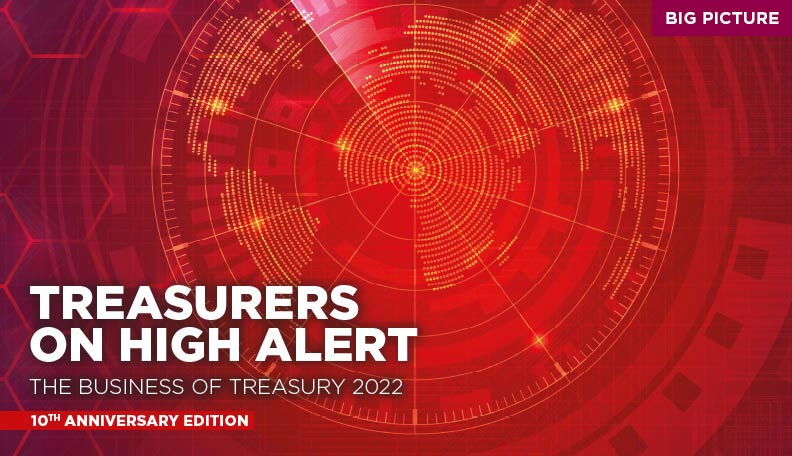
This year’s The Business of Treasury comes at possibly the most volatile period in the 10-year life of this research. Still recovering from COVID-19, Russia’s invasion of Ukraine represents the biggest geopolitical crisis in decades.
Treasurers deal with risk all the time and are well placed to face the challenges with which they are regularly presented. The current crisis will, however, have a significant impact on some businesses and, as a consequence, their treasurers. They will be working in a whole new context. The title says it all: Treasurers on high alert.
We encourage you to read the full report, but if you’re pushed for time, the following six charts convey some key highlights…
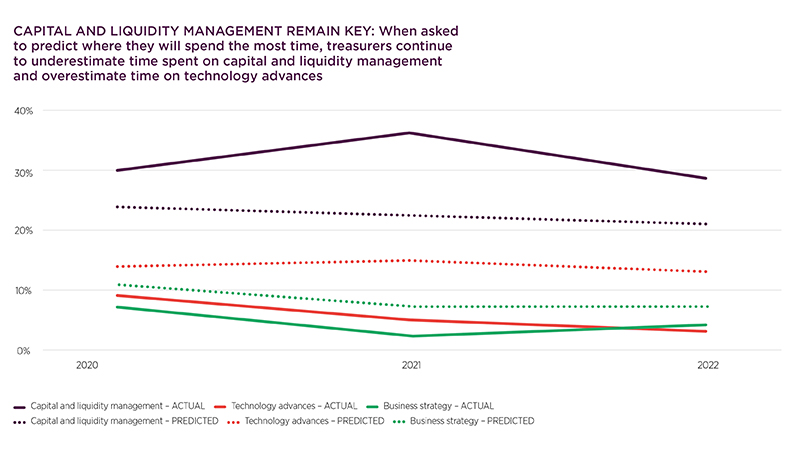
Let’s take a look at this first chart, which shows that treasurers continue to overestimate the time they will spend on technology and automation, as well as business strategy, and underestimate the time they will spend on capital and liquidity management. The fact is, capital and liquidity management remains at the heart of the treasurer’s work.
That said, as the coronavirus pandemic recedes, we see a ramp-up across other activities. All this makes the treasurer and their (generally) small treasury team busier than ever.
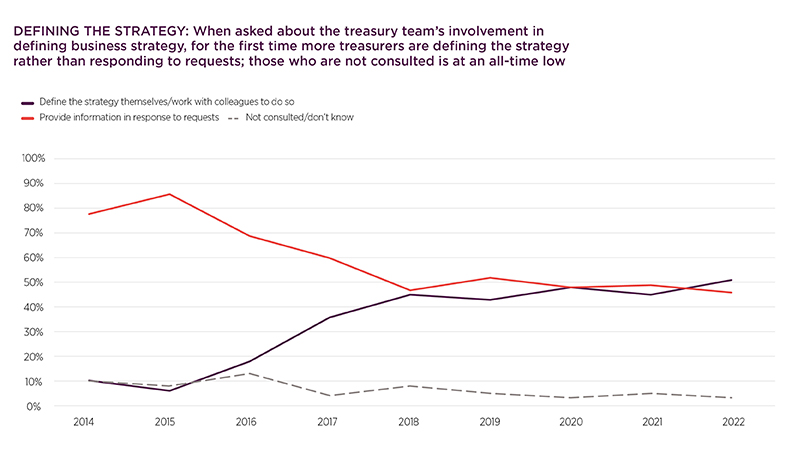
This is a stand-out finding. For the first time ever, more treasurers are defining strategy than simply responding to requests. This is evidence that treasury really has transitioned from reactive to proactive. We also found that board relations are stronger than ever.
The key question here is: will this strategy-setting prominence continue? For some treasurers, the increased interaction with the board was temporary – on a ‘needs-must’ basis. But significantly more of those who had increased interaction have kept it going than those for whom it fell away.
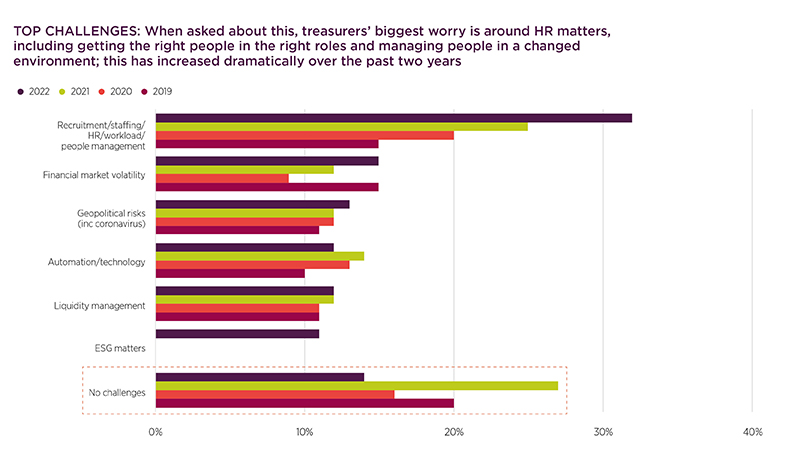
When we asked treasurers about their professional and business challenges, they pointed to recruitment and people management – including looking after staff wellbeing – as the major concerns. And, they say, this is likely to intensify in the short to medium term. This isn’t surprising. Treasurers have had to shift their team in and (potentially) out of working from home, at short notice, while rethinking the wider transformation of their workplace. It does look, however, like hybrid working is here to stay, and this could be an important incentive for current and prospective employees.
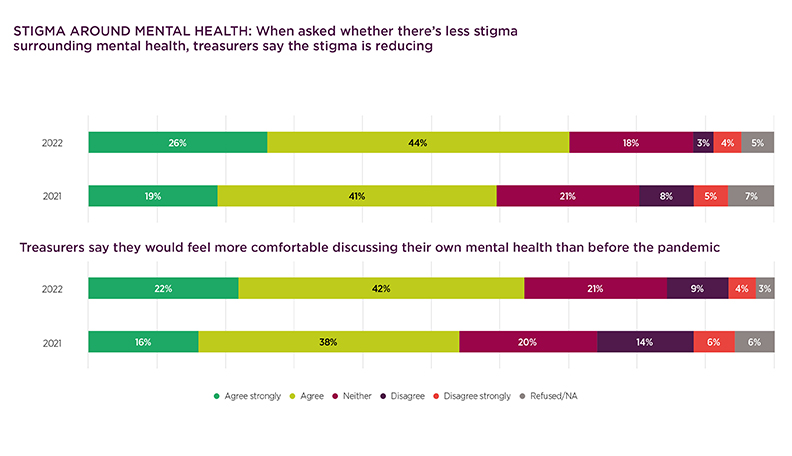
Mental wellbeing remains a core focus for businesses and treasurers; indeed, it is being normalised as an issue. It’s very encouraging that any stigma around mental health issues appears to be receding. The number of companies concerned about mental health has decreased by 7%. This suggests that more companies have better policies around these issues, and that people have built up their resilience after the impact of COVID-19. Sadly, we may see these figures reverse as the impact of world events and inflationary pressures are felt by treasurers. The Association of Corporate Treasurers (ACT) will of course be monitoring this.
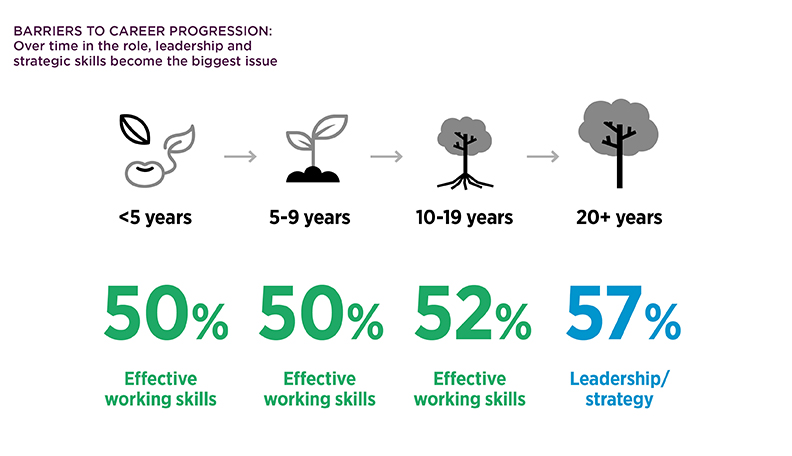
What do treasurers see as the main barrier to career progression? In 2021 it was leadership/strategy, but in 2022 it is effective working skills (such as time management). This seems to be a particular issue among younger treasurers. Leadership becomes increasingly relevant for more experienced treasurers. The ACT places a focus on these areas – in addition to technical knowledge and of course behavioural skills – in our qualifications.
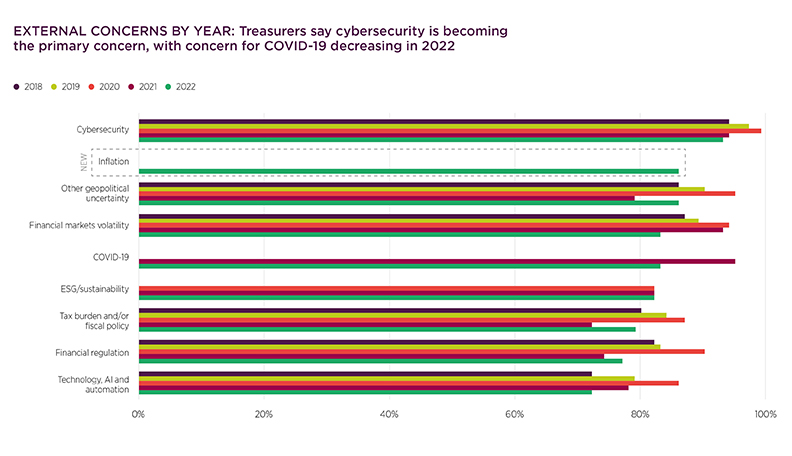
Let’s finish where we started: with the high-risk environment in which treasurers are working. Although inflation is a new area of research in 2022, it is now the second-highest external concern for treasurers, alongside geopolitical uncertainty. But it’s at times of crisis that we see the true value of the treasury community. Treasurers are experts in financial risk management, and today even younger treasurers are veterans of crises. When the environment is volatile, treasurers deliver reassurance.
